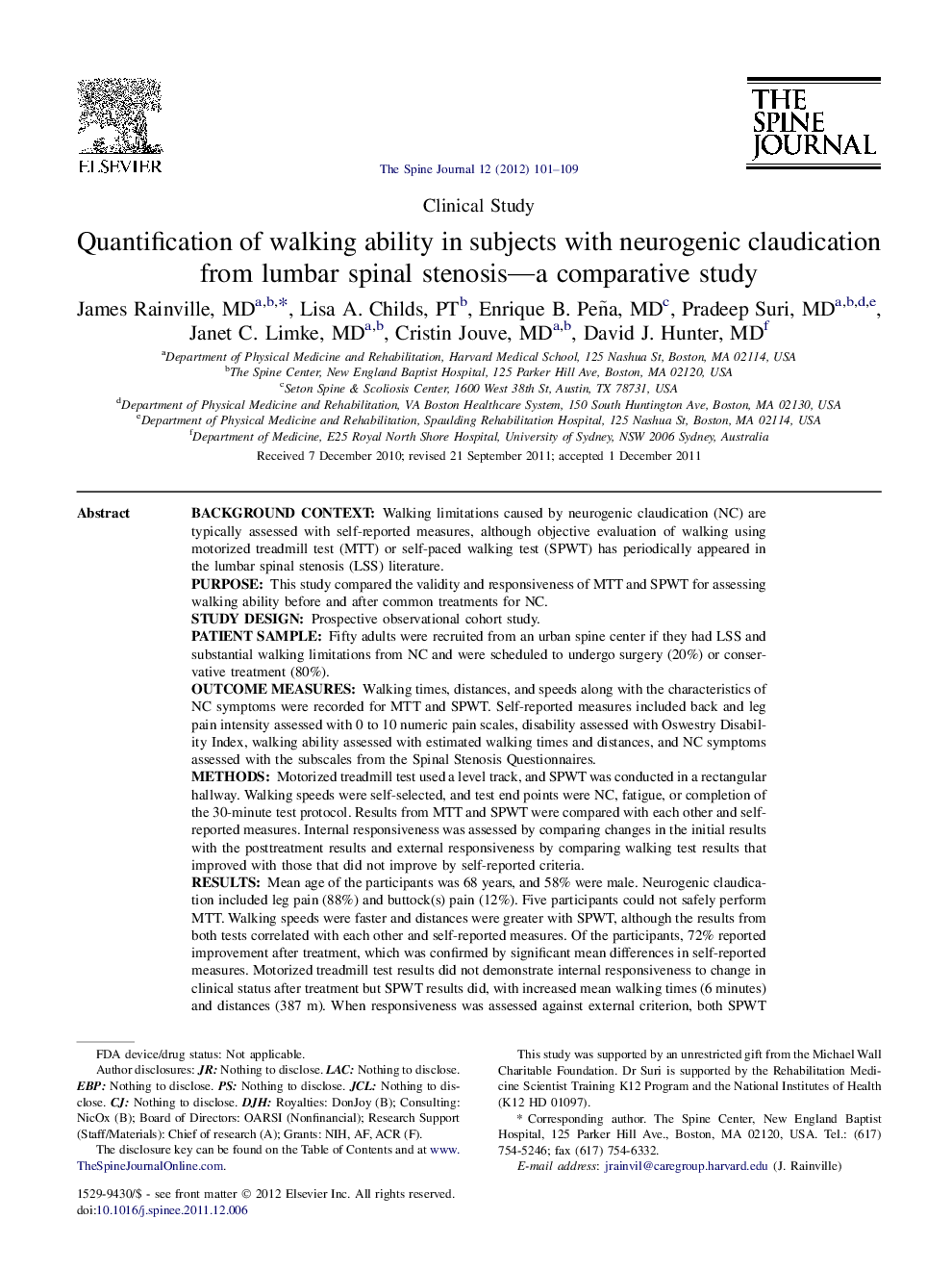| کد مقاله | کد نشریه | سال انتشار | مقاله انگلیسی | نسخه تمام متن |
|---|---|---|---|---|
| 4098542 | 1268617 | 2012 | 9 صفحه PDF | دانلود رایگان |

Background contextWalking limitations caused by neurogenic claudication (NC) are typically assessed with self-reported measures, although objective evaluation of walking using motorized treadmill test (MTT) or self-paced walking test (SPWT) has periodically appeared in the lumbar spinal stenosis (LSS) literature.PurposeThis study compared the validity and responsiveness of MTT and SPWT for assessing walking ability before and after common treatments for NC.Study designProspective observational cohort study.Patient sampleFifty adults were recruited from an urban spine center if they had LSS and substantial walking limitations from NC and were scheduled to undergo surgery (20%) or conservative treatment (80%).Outcome measuresWalking times, distances, and speeds along with the characteristics of NC symptoms were recorded for MTT and SPWT. Self-reported measures included back and leg pain intensity assessed with 0 to 10 numeric pain scales, disability assessed with Oswestry Disability Index, walking ability assessed with estimated walking times and distances, and NC symptoms assessed with the subscales from the Spinal Stenosis Questionnaires.MethodsMotorized treadmill test used a level track, and SPWT was conducted in a rectangular hallway. Walking speeds were self-selected, and test end points were NC, fatigue, or completion of the 30-minute test protocol. Results from MTT and SPWT were compared with each other and self-reported measures. Internal responsiveness was assessed by comparing changes in the initial results with the posttreatment results and external responsiveness by comparing walking test results that improved with those that did not improve by self-reported criteria.ResultsMean age of the participants was 68 years, and 58% were male. Neurogenic claudication included leg pain (88%) and buttock(s) pain (12%). Five participants could not safely perform MTT. Walking speeds were faster and distances were greater with SPWT, although the results from both tests correlated with each other and self-reported measures. Of the participants, 72% reported improvement after treatment, which was confirmed by significant mean differences in self-reported measures. Motorized treadmill test results did not demonstrate internal responsiveness to change in clinical status after treatment but SPWT results did, with increased mean walking times (6 minutes) and distances (387 m). When responsiveness was assessed against external criterion, both SPWT and MTT demonstrated substantial divergence with self-reported changes in clinical status and alternative outcome measures.ConclusionsBoth MTT and SPWT can quantify walking abilities in NC. As outcome tools, SPWT demonstrated better internal responsiveness than MTT, but neither test demonstrated adequate external responsiveness. Neither test should be considered as a meaningful substitution for disease-specific measures of function.
Journal: The Spine Journal - Volume 12, Issue 2, February 2012, Pages 101–109